-
 Bitcoin
Bitcoin $115800
-2.47% -
 Ethereum
Ethereum $3690
1.19% -
 XRP
XRP $3.105
-1.91% -
 Tether USDt
Tether USDt $0.9999
-0.07% -
 BNB
BNB $771.0
0.19% -
 Solana
Solana $179.9
-3.54% -
 USDC
USDC $0.9998
-0.03% -
 Dogecoin
Dogecoin $0.2291
-3.40% -
 TRON
TRON $0.3140
0.81% -
 Cardano
Cardano $0.8007
-1.24% -
 Hyperliquid
Hyperliquid $42.92
-0.44% -
 Stellar
Stellar $0.4212
-2.16% -
 Sui
Sui $3.730
0.03% -
 Chainlink
Chainlink $18.06
0.03% -
 Bitcoin Cash
Bitcoin Cash $546.6
5.08% -
 Hedera
Hedera $0.2438
0.55% -
 Avalanche
Avalanche $23.57
-0.81% -
 Litecoin
Litecoin $114.2
1.04% -
 UNUS SED LEO
UNUS SED LEO $8.970
-0.35% -
 Shiba Inu
Shiba Inu $0.00001363
-0.16% -
 Toncoin
Toncoin $3.136
-0.89% -
 Ethena USDe
Ethena USDe $1.001
-0.04% -
 Uniswap
Uniswap $10.30
1.42% -
 Polkadot
Polkadot $4.013
-0.06% -
 Monero
Monero $324.8
0.87% -
 Dai
Dai $0.9999
-0.04% -
 Bitget Token
Bitget Token $4.509
-1.38% -
 Pepe
Pepe $0.00001226
-2.60% -
 Aave
Aave $291.8
1.34% -
 Cronos
Cronos $0.1294
2.19%
How to judge the monthly MACD double line adhesion + weekly line break through the previous high + daily line shrinkage retracement?
Monthly MACD adhesion, weekly breakout above prior high, and daily MACD contraction suggest a high-probability bullish setup with strong multi-timeframe confluence.
Jul 24, 2025 at 12:43 pm
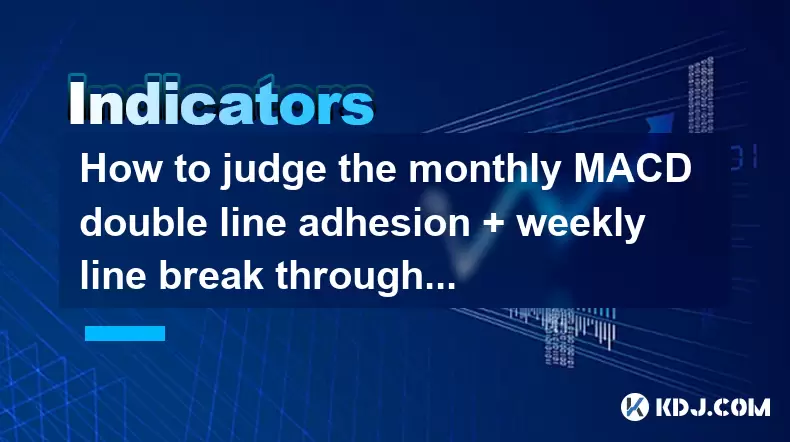
Understanding the MACD Indicator and Its Components
The MACD (Moving Average Convergence Divergence) is a momentum-based technical indicator widely used in cryptocurrency trading to identify potential trend reversals, momentum shifts, and entry or exit points. It consists of three core components: the MACD line, the signal line, and the histogram. The MACD line is calculated by subtracting the 26-period Exponential Moving Average (EMA) from the 12-period EMA. The signal line is typically a 9-period EMA of the MACD line. When these two lines are close together or appear to "stick" together, this is referred to as MACD double line adhesion. This condition often signals a period of consolidation or low momentum, which may precede a breakout.
Interpreting Monthly MACD Double Line Adhesion
When analyzing the monthly MACD chart, adhesion between the MACD line and the signal line suggests that the long-term trend is losing momentum or entering a consolidation phase. In the context of cryptocurrency markets, which are highly volatile, such adhesion may indicate that large institutional movements have paused, and the market is awaiting new directional cues. This phase is critical because it often precedes a significant move. Traders should monitor whether the adhesion occurs near a key support or resistance level. If the adhesion happens after a prolonged downtrend, it may hint at a potential reversal. Conversely, adhesion after a strong rally might suggest exhaustion.
- Check that the MACD line and signal line are within 0.05 of each other on the monthly chart.
- Confirm that volume has decreased during the adhesion period, indicating reduced selling or buying pressure.
- Look for candlestick patterns such as doji or spinning tops on the monthly candles, reinforcing indecision.
- Ensure that the price is not making new lows or highs during this period, which supports consolidation.
Weekly Line Breakthrough of the Previous High
A breakout on the weekly chart above the previous price high is a strong bullish signal, especially when combined with other confirming indicators. In cryptocurrency trading, weekly breakouts often carry more weight than daily ones due to the longer time frame. When the price closes above the prior swing high on the weekly chart, it indicates that bullish momentum is overcoming resistance. This is particularly significant if the breakout occurs on increased volume, which confirms participation from larger market players.
- Identify the most recent weekly swing high and mark it on the chart.
- Wait for a weekly candle to close above this level—intraday highs are not sufficient.
- Verify that the RSI (Relative Strength Index) on the weekly chart is not in overbought territory (above 70), to avoid false breakouts.
- Cross-check with on-chain data such as exchange outflows or wallet accumulation trends, which can support bullish sentiment.
When this weekly breakout coincides with monthly MACD adhesion, it suggests that a long-term consolidation is ending, and a new bullish phase may be beginning. The alignment of time frames strengthens the validity of the signal.
Daily MACD Line Contraction and Retracement
After a weekly breakout, short-term pullbacks are common. A daily MACD line contraction—where the histogram bars shrink in height—indicates that downward momentum is weakening. This retracement is healthy and often presents a second entry opportunity. The key is to distinguish between a temporary pullback and a reversal.
- Observe the daily MACD histogram shrinking while the price dips slightly.
- Ensure that the MACD line remains above the signal line during the retracement, maintaining bullish alignment.
- Confirm that the price is holding above the 20-day or 50-day EMA on the daily chart.
- Watch for bullish candlestick patterns such as hammer or bullish engulfing during the retracement.
This phase is ideal for traders who missed the initial breakout. Entering during the shrinkage retracement allows for a favorable risk-to-reward ratio, especially if the monthly and weekly signals remain intact.
Putting It All Together: Multi-Timeframe Confirmation
The strategy relies on multi-timeframe confluence. The monthly adhesion sets the stage, the weekly breakout confirms direction, and the daily contraction offers a tactical entry. Each time frame validates the others. For example, if the monthly MACD is still in adhesion while the weekly price breaks out and the daily MACD shows shrinking bearish momentum, the probability of a sustained upward move increases.
- Use a charting platform like TradingView to align monthly, weekly, and daily views.
- Apply the MACD indicator with default settings (12, 26, 9) on all three time frames.
- Draw horizontal lines at the previous weekly high and monitor breakout confirmation.
- Enable volume indicators to confirm breakout strength.
- Set alerts for MACD line crossovers on the daily chart during retracement.
This layered approach reduces false signals and increases confidence in trade execution.
Practical Example Using a Cryptocurrency Chart
Consider Bitcoin (BTC) in a scenario where the monthly MACD lines have been adhered for three consecutive months. The price has traded sideways between $28,000 and $31,000. On the weekly chart, a green candle closes at $32,500, surpassing the prior high of $32,000. Volume on that week is 30% above average. On the daily chart, the price pulls back to $31,200 over the next few days. During this pullback, the MACD histogram bars on the daily chart become smaller, and the MACD line stays just above the signal line. This setup meets all three criteria: monthly adhesion, weekly breakout, and daily contraction retracement. A trader might place a buy limit order near $31,000–$31,200 with a stop-loss below $30,000.
Frequently Asked Questions
What if the weekly breakout fails after the monthly MACD adhesion?
If the price breaks above the previous high but then closes back below it within the same week, the breakout is invalidated. This could indicate a bull trap. In such cases, wait for re-confirmation. Monitor whether the MACD lines on the monthly chart begin to diverge bearishly or if volume dries up during attempted rallies.
How long should the monthly MACD adhesion last to be significant?
Typically, adhesion lasting 2 to 4 months carries more weight. Shorter adhesions (less than one month) may just reflect normal noise. The longer the adhesion, the more energy is being stored for a potential breakout, especially if accompanied by tightening price ranges.
Can this strategy be applied to altcoins?
Yes, but with caution. Altcoins often have lower liquidity and are more prone to manipulation. Ensure that the altcoin has consistent trading volume and is listed on major exchanges. Cross-verify with on-chain metrics like active addresses or exchange reserves to confirm strength.
Should I use leverage when trading this setup?
Leverage is not recommended during the retracement phase due to volatility. Even with strong signals, cryptocurrencies can experience sharp, unpredictable swings. Trade with risk-controlled position sizing and avoid over-leveraging, especially on lower-cap assets.
Disclaimer:info@kdj.com
The information provided is not trading advice. kdj.com does not assume any responsibility for any investments made based on the information provided in this article. Cryptocurrencies are highly volatile and it is highly recommended that you invest with caution after thorough research!
If you believe that the content used on this website infringes your copyright, please contact us immediately (info@kdj.com) and we will delete it promptly.
- Pump, Bonk, Buyback: A Wild Ride in Crypto Town!
- 2025-07-25 19:10:12
- Punisher Coin, Dogecoin, Shiba Inu: Meme Coin Mania in the 2025 Crypto Landscape
- 2025-07-25 19:10:12
- Celestia's Token Control: Buyback & Staking Overhaul in Focus
- 2025-07-25 19:50:11
- Altcoins, Bitcoin, and Crypto Coins: What's Hot in the NYC Crypto Scene?
- 2025-07-25 19:55:52
- Litecoin Price Breakout Imminent? Rally Potential Explored!
- 2025-07-25 17:30:12
- Ether ETFs Surge, Bitcoin Wobbles: Is an ETH Breakout Imminent?
- 2025-07-25 16:50:12
Related knowledge

How to interpret that the KDJ D line is downward for a long time but the price is sideways?
Jul 25,2025 at 07:00pm
Understanding the KDJ Indicator and Its ComponentsThe KDJ indicator is a momentum oscillator widely used in cryptocurrency trading to assess overbough...

What does it mean that the KDJ indicator forms a double bottom at a low level?
Jul 25,2025 at 05:08pm
Understanding the KDJ Indicator in Cryptocurrency TradingThe KDJ indicator is a momentum oscillator widely used in cryptocurrency trading to identify ...
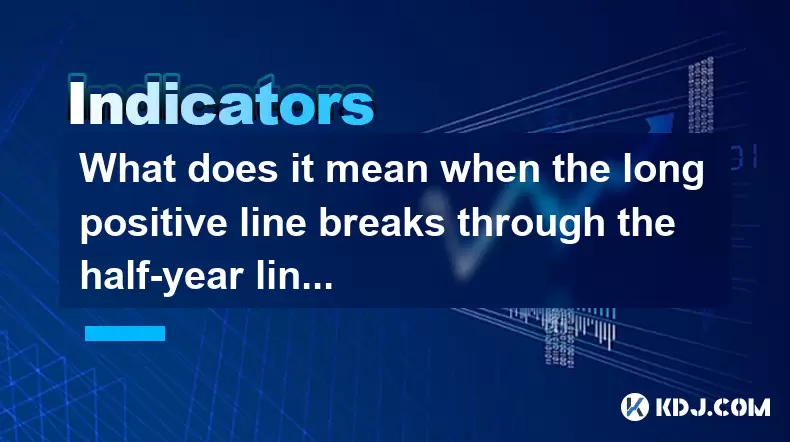
What does it mean when the long positive line breaks through the half-year line and then steps back?
Jul 25,2025 at 06:49pm
Understanding the Long Positive Line in Candlestick ChartsIn the world of cryptocurrency trading, candlestick patterns play a vital role in technical ...
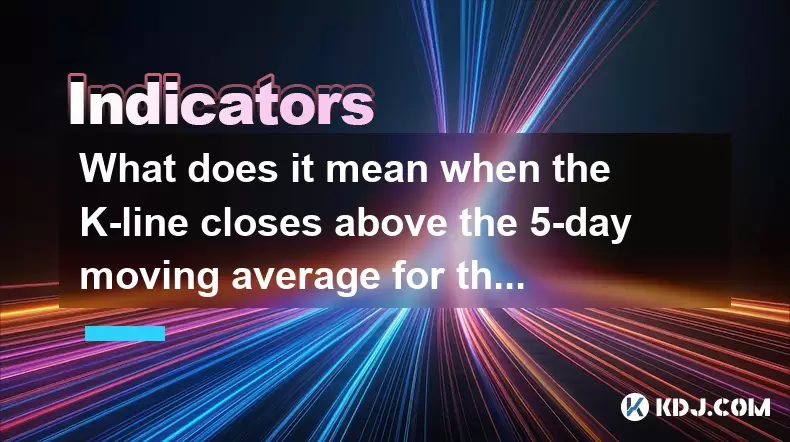
What does it mean when the K-line closes above the 5-day moving average for three consecutive days?
Jul 25,2025 at 10:07pm
Understanding the K-line and 5-day Moving AverageThe K-line, also known as a candlestick, is a critical charting tool used in technical analysis to re...
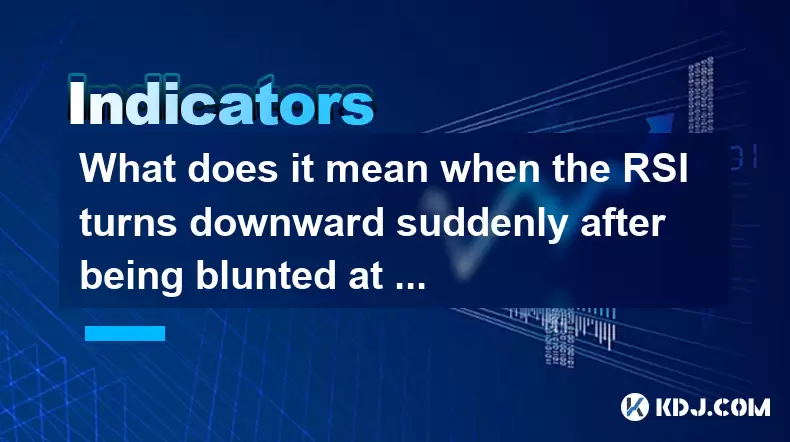
What does it mean when the RSI turns downward suddenly after being blunted at a high level?
Jul 25,2025 at 04:00pm
Understanding the RSI and Its Role in Technical AnalysisThe Relative Strength Index (RSI) is a momentum oscillator that measures the speed and change ...
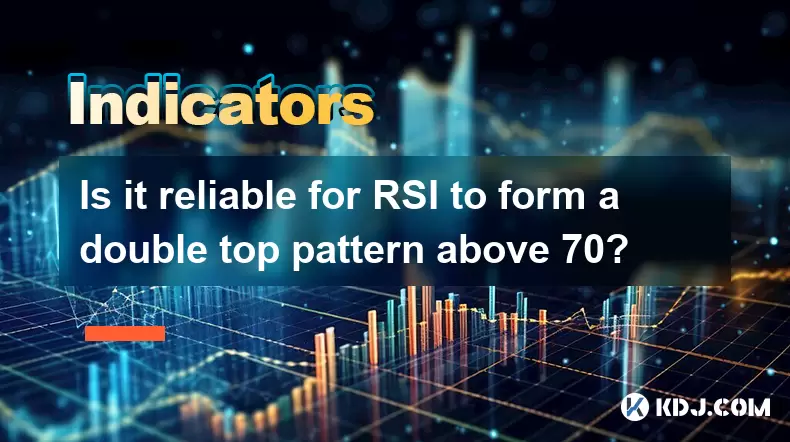
Is it reliable for RSI to form a double top pattern above 70?
Jul 25,2025 at 04:49pm
Understanding the RSI Indicator and Its Role in Technical AnalysisThe Relative Strength Index (RSI) is a momentum oscillator that measures the speed a...

How to interpret that the KDJ D line is downward for a long time but the price is sideways?
Jul 25,2025 at 07:00pm
Understanding the KDJ Indicator and Its ComponentsThe KDJ indicator is a momentum oscillator widely used in cryptocurrency trading to assess overbough...

What does it mean that the KDJ indicator forms a double bottom at a low level?
Jul 25,2025 at 05:08pm
Understanding the KDJ Indicator in Cryptocurrency TradingThe KDJ indicator is a momentum oscillator widely used in cryptocurrency trading to identify ...

What does it mean when the long positive line breaks through the half-year line and then steps back?
Jul 25,2025 at 06:49pm
Understanding the Long Positive Line in Candlestick ChartsIn the world of cryptocurrency trading, candlestick patterns play a vital role in technical ...

What does it mean when the K-line closes above the 5-day moving average for three consecutive days?
Jul 25,2025 at 10:07pm
Understanding the K-line and 5-day Moving AverageThe K-line, also known as a candlestick, is a critical charting tool used in technical analysis to re...

What does it mean when the RSI turns downward suddenly after being blunted at a high level?
Jul 25,2025 at 04:00pm
Understanding the RSI and Its Role in Technical AnalysisThe Relative Strength Index (RSI) is a momentum oscillator that measures the speed and change ...

Is it reliable for RSI to form a double top pattern above 70?
Jul 25,2025 at 04:49pm
Understanding the RSI Indicator and Its Role in Technical AnalysisThe Relative Strength Index (RSI) is a momentum oscillator that measures the speed a...
See all articles

























































































